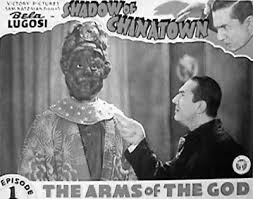I confess that I have no interest in any philosophical studies that invoke mathematics-- not because I don't like mathematics, but because I don't think the discipline correlates adequately with the discipline of human art. Additionally, as I pointed out in this essay, no fictional narrative-- which is the only form of art with which I concern myself on this blog-- is bound by physical law in the way that reality is: hence, I formed the notion that each of my phenomenalities has its own unique, gestural relationship to causal reality.
Various online essays, one of which is this Wikipedia entry, cite two major divisions in the interpretation of probability. One is what is called variously "physical" or "frequentist" probability
Physical probabilities... are associated with random physical systems such as roulette wheels, rolling dice and radioactive atoms. In such systems, a given type of event (such as the dice yielding a six) tends to occur at a persistent rate, or "relative frequency", in a long run of trials. Physical probabilities either explain, or are invoked to explain, these stable frequencies.This form can in no way relate to my use of literary probability, or the uses seen in Aristotle or Lewis, because nothing within a literary continuum has real physical properties.
The other main type, "evidential probability," shows more potential for literary application.
Evidential probability... can be assigned to any statement whatsoever, even when no random process is involved, as a way to represent its subjective plausibility, or the degree to which the statement is supported by the available evidence. On most accounts, evidential probabilities are considered to be degrees of belief, defined in terms of dispositions to gamble at certain odds.
All three phenomenalities-- naturalistic, uncanny, and marvelous-- are established by the ways in which the authors of works in each division choose to present "evidence" for the nature of their worlds. For a critic like Tzvetan Todorov, this means establishing whether or not a "fantastic" event is "real" or "unreal." But as I've demonstrated in my formulation of the NUM theory, even the most 'realistic' narrative merely reproduces gestures suggestive of a reality dominated by causality. I've also noted that within this context, everything is by definition "probable," and any narrative element suggestive of improbability is "incoherent."
The fictional detective Sherlock Holmes usually deals with this sort of naturalistic probability. The majority of his prose adventures solve "atypical" mysteries by revealing new perspectives proving them to be the results of "typical" influences. This would be characteristic of a Conan Doyle story like "The Five Orange Pips," or, to cite a non-Doyle work, the 1939 film ADVENTURES OF SHERLOCK HOLMES. I noted in my review of this film that one character in the film's narrative "comes very close to edging the film into the phenomenality of the uncanny." Yet because the viewer always knows that it's merely a human assassin manipulated by Moriarty, the film must offer a purely causal explanation for the killer's method of killing.
Todorov's work THE FANTASTIC argues that much of what I can "the uncanny" also falls into the domain of "the real" if an apparent fantasy-creature is revealed to be a falsehood that is far from immune to causal reality, as with Doyle's "Hound of the Baskervilles." In contrast, I argue that the note of "irreducible strangeness" in an uncanny work like "Hound" divorces it from the type of reality favored in "The Five Orange Pips." Thus the explanation of the Hound via the rules of ordinary causality, while it serves a valid narrative purpose, does not dismiss the affective sense of strangeness from the narrative. This dynamic holds true even when one is dealing not with a deception but simply a strange sort of menace, like an insane serial murderer, such as one sees in another non-Doyle Sherlock film, A STUDY IN TERROR.
Finally, though Holmes did not often encounter the genuinely marvelous in the Doyle mythos, this 1923 story verges into the arena of science fiction, in that Holmes encounters a special drug that can somehow transfer the attributes of an animal to a man. In non-Doyle films, this phenomenality would be best represented by the 2009 SHERLOCK HOLMES film. Oddly, though this film begins by suggesting the existence of marvelous supernatural powers-- usually verboten in a Holmes story-- it can only "explain" this marvel by resorting to another marvel: an electrical projection-device.
Probability in literature, then, depends entirely upon the nature of the evidence mustered by the author. It's my general finding that even works that attempt to vacillate between the depiction of two phenomenalities in the same narrative tend to favor one over the other, as I asserted in my review of LET'S SCARE JESSICA TO DEATH.






